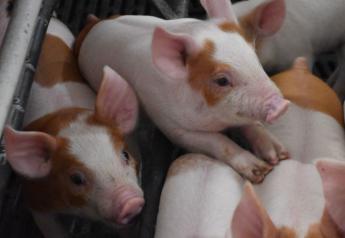Threat of Foreign Animal Disease Deserves Attention, Funding

The following commentary does not necessarily reflect the views of AgWeb or Farm Journal. The opinions expressed below are the author's own.
An outbreak of foot and mouth disease (FMD) in the United States would create significant economic disruption, but its scope, duration and cost depends on our level of preparation, as much as on the nature and severity of the outbreak.
In Late April, U.S. Secretary of Agriculture Sonny Perdue took a step toward better preparation by authorizing access to genetically modified, non-infectious (FMD) virus on the U.S. mainland. Previously, the only location allowed to use live FMD virus in research was the Plum Island Animal Disease Center off the coast of Long Island, N.Y.
The new USDA Policy enables more U.S. research and vaccine development for FMD, but biosecurity precautions and approval processes will take several years, says UDSA Chief Veterinarian Jack Shere.
The livestock industry has, fortunately, invested in other areas of response planning. The USDA, with input from industry, has developed a detailed “Foreign Animal Disease Preparedness and Response Plan,” which focuses on FMD along with other foreign animal diseases. As a component of that plan, Iowa State University’s Center for Food Security & Public Health (CFSPH), in cooperation with Kansas State University, University of Minnesota, and University of California-Davis, have developed the Secure Milk Supply (SMS) and Secure Beef Supply (SBS) Plans, which focus on maintaining business continuity while aggressively mitigating an FMD outbreak.
Current thinking has shifted away from mass culling or “stamping out” as the primary strategy for responding to most FMD outbreaks. Instead, today’s plans place more emphasis on large-scale vaccination as a means of containing the disease while allowing carefully regulated movement of cattle and continuation of commerce.
The volume of vaccine needed would depend on the type and scope of an outbreak. CFSPH director James Roth, DVM, PhD, DACVM, has defined six types of potential FMD outbreaks, ranging from Type 1, a focal outbreak, to Type 6, a catastrophic North American outbreak. At the lower end of the scale, the response likely would focus on culling all infected or exposed animals in the affected zone. But as the outbreak spreads to a larger regional or national scale, stamping out becomes unrealistic, and the response would shift toward alternative strategies including vaccination that could involve millions of animals.
Shere says the new policy will allow companies to work with USDA’s Center for Veterinary Biologics in securing approval to use the live virus in vaccine development and other FMD research. The change Shere says, should allow a more rapid response in vaccine production in case of an outbreak, positioning U.S. companies to quickly scale up production of strain-specific vaccines. Currently, the United States would need to rely largely on overseas manufacturers to supply the vaccines, which would add several critical days to response time. Vaccine manufacturing capacity on the U.S. mainland also could keep costs lower for livestock producers, Shere says.
Shere adds though, that companies intending to work with the live virus will be subject to an extensive authorization process requiring extensive biosecurity measures in the design of their facilities and processes. That permitting process, he says, will require at least two to three years, and possibly up to five years, before private companies begin work with the modified-live FMD virus on the U.S. Mainland.
The USDA currently operates a vaccine bank at the Plum Island Animal Disease Cente. While critical, the vaccine bank at current funding levels cannot maintain an adequate number of virus strains and lacks sufficient “surge capacity” to respond quickly to a large outbreak.
In a 2014, CFSPH white paper titled “FMD Vaccine Surge Capacity for Emergency Use in the United States,” Dr. Roth estimated the cost of funding adequate surge capacity at $150 million per year for five years — a relatively small price to protect a livestock industry that generates $100 billion per year in cash receipts.
Industry groups including the National Pork Producers Council (NPPC) and the National Cattlemen’s Beef Association have called on Congress to provide the funds so that USDA can upgrade the vaccine bank and build a system for rapid deployment. Now is the time for the government to acknowledge FMD as a national security issue. The price for upgrading our response capabilities is small relative to the risk of an inadequate vaccination program.
Listen to an audio recording of UDSA Chief Veterinarian Jack Shere discussing the topic.







